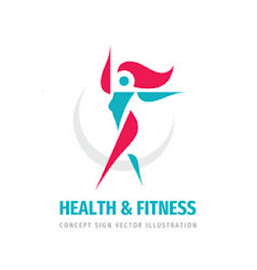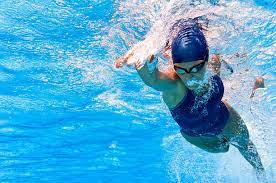The first step in losing the weight of your belly fat is to engage in at least 30 minutes of cardio daily. Some of the best ways to do this are swimming, running, jogging, brisk walking, and even dancing. Once you’ve done at least 30 minutes of cardio for a few days in a row, slowly increase the amount of time per day until you’re getting in about an hour a day.
If you’re among those who are unwilling to give up carbs even in small amounts, you’ll want to shed fat through exercises. Aerobic exercises and cardiovascular training are the best types of exercises to focus on, as they improve your heart health and decrease visceral fat located around the abdomen.
Getting rid of belly fat is a combination of smart nutrition, stress relief and proper exercise. When a woman’s levels of estrogen drop during menopause, this can bring on a significant increase in stomach fat. Even women who have always had flat tummies may find themselves with more pudge. Fortunately, burning off this kind of fat is possible with regular exercise, proper nutrition and stress reduction
1)Walking, especially at a quick pace.
Walking is an exercise that just about everyone can do. ... Walking at a brisk pace means you'll be walking faster than you would normally. This quick pace usually results in your heart rate and breathing rate increasing as well as your muscles working harder as you power through the steps.
Walking is a great way to maintain fitness and add in some extra physical activity into your day. The average person takes about 100 steps per minute when walking. When walking at a brisk pace (such as with Nordic walking), this increases to about 120-130 steps per minute.
2)Running.
Running is free, you can do it anywhere, and it burns more calories than any other mainstream exercise. Regular running can reduce your risk of long-term illnesses, such as heart disease, type 2 diabetes and stroke. It can also boost your mood and keep your weight under control. A few minutes of good-quality running may be more beneficial health wise than an hour of plodding on the spot.
Whether you're an experienced runner or a novice starting out on your first jog, this book will change your life. Running is free, you can do it anywhere, and it burns more calories than any other mainstream exercise. Regular running can reduce your risk of long-term illnesses, such as heart disease and stroke, type 2 diabetes, asthma, arthritis and some cancers. Physically, it improves cardiovascular fitness; strengthens bones; lowers blood pressure; and helps maintain a healthy weight. Mentally, it relieves stress; improves sleep; boosts mood; and increases self-esteem. Beginning with expert advice from personal trainer Tom May hew on how to get running – from choosing the right shoes to avoiding injury – we then take you through two 20-week training programmers for 5 k or 10 k challenges. Each week features an inspiring case study of someone who is running to improve their life – whether they are increasing their confidence or fighting back against homelessness. With stunning photographs and illustrations throughout, "Running" is an essential resource for anyone looking to start a running programmer to help them lead fitter, healthier and happier lives."
In recent years running has cemented its place in the exercise mainstream. According to a U.S. National Sporting Goods Association survey, in 2007 more than fifty-two million Americans reported that they had gone running at least six times in the past year. Why? Running is free, you can do it anywhere, and it burns more calories than any other mainstream exercise. Regular running can reduce your risk of long-term illnesses, such as heart disease, type 2 diabetes and stroke. It can also boost your mood, help you lose weight and keep it off, improve your sleep, build strong bones and muscles, and even improve your sex life
Running may just be the most efficient, effective and accessible form of exercise there is. It can help you stay in shape, lose weight and even improve your mental health. It's a great way to stay fit without investing in a gym membership, personal trainer or expensive equipment. Plus, running is free, and it gives you a bit of fresh air and sunshine -- always good for what ails you.
3)Biking
Biking helps to protect you from serious diseases. It pumps up your endorphins, elevates your heart rate and makes you happy.
Each year, hundreds of thousands of Americans are diagnosed with life-threatening diseases that can be attributed to lack of physical activity and unhealthy eating habits. The good news is these diseases are largely preventable through proper diet and exercise. Cycling is a great way to start incorporating exercise into your everyday routine, and it has proven benefits for both your health and the environment.
Cycling is a healthy and efficient means of transportation. People who cycle regularly are less likely to suffer heart disease, stroke and some cancers. Cycling also helps reduce stress and anxiety.
Regular cycling stimulates and improves your heart, lungs and circulation, reducing your risk of cardiovascular diseases. Cycling strengthens your heart muscles, lowers resting pulse and reduces blood fat levels.
Biking is not only enjoyable, but it has a lot of health benefits too.
4)Rowing.
Rowing is a low-impact exercise that provides the same great results as other cardio exercise. If you are looking to build lean and strong muscles, rowing is a great option. Rowing involves all types of compound movements, making it an ideal exercise for everyone from teenagers to older adults. Rowing targets arms, legs, and core muscles.
Rowing is a low-impact exercise that, with the proper technique, can also be incredibly efficient. Engaging over 80% of your body's muscles and delivering one of the best overall bodily workouts, rowing burns more calories per hour than nearly any other exercise.
Rowing is one of the oldest, most effective forms of exercise. It provides low-impact cardiovascular activity and strengthens muscles throughout your entire body. Rowers are beginner-friendly and relatively affordable as far as at-home gym equipment goes. They also take up very little space when not in use.
As an aerobic workout, rowing can help build endurance, which is useful for all sorts of athletic activity in the long run. In fact, any time you get a group of athletes together, you'll likely find that their one favorite go-to workout is rowing. This low-impact exercise can help build muscle and strength, so it's a great way to get started on the path toward your fitness goals.
What’s the first thing that comes to mind when you hear about any kind of sport? I bet for most of us, “calories” are the first thing we think of. Rowing isn’t different from all other sports in this regard. The next thing on your mind must be – how many calories can I burn while rowing? Let me tell you... in the article below we are going to find out exactly how many calories is rowing burning and how much time it will take you to lose a pound. And get ready – after reading this article you might want to start using the rowing machine immediately!
Rowing is a total body workout that improves your stamina, power and strength. It’s a unique sport in the sense that it uses the legs, arms and core simultaneously to create the most effective cardio workout possible. Rowing machines help tone and strengthen each muscle group making rowing an ideal form of exercise for any fitness level. The motion of rowing also opens up the hips, stretches the lats and tights while also providing a great aerobic workout.
5)Swimming
Swimming helps build endurance, muscle strength and cardiovascular fitness. An exercise session can burn around 500 calories an hour.
Swimming is an excellent form of exercise and a great cardiovascular workout. Keep your endurance, muscle strength and cardiovascular system in top shape when you swim regularly. Swimming is also great to add variety to your exercise routine as well as being low-impact on muscles and joints.
Swimming workouts burn fat, trim inches and help you get stronger, fitter and healthier than ever. Swimming vigorously can burn up to 500-700 calories an hour, whether you do a breaststroke or freestyle. It's a highly effective form of exercise for weight loss and toning. Swimming engages all of the major muscle groups, from your abdominal and back muscles to your arms, legs, hips and gluts. It can be your sole form of fitness but can effectively compliment other exercises like walking and running as well. So go ahead, make a splash, lose weight and feel great.
Swimming strengthens your heart and lungs. The muscles you use while swimming strengthen after a few weeks of regular exercise. If you swim regularly, you may reduce your risk of chronic illnesses, such as heart disease, type 2 diabetes and stroke.
Swimming is a low-impact exercise. It is also an aerobic exercise and improves cardiovascular endurance. While pretty much all strokes will work your upper body, you can target your lower body as well by kicking harder. Swimming is also beneficial for muscle strength and endurance.
6)Cycling
Cycling on a regular basis can lower body fat levels, which promotes healthy weight management. Cycling has also been shown to reduce the risk of coronary heart disease as well as improve strength and flexibility. It involves less impact than most other forms of exercise, making it easier on your joints.
One of the most effective ways to burn calories is to jump on a bike. The rigorous exercise can help control weight gain and lower body fat levels. Cycling can also improve muscle strength and flexibility. Ride your bike frequently enough and you’ll improve your heart function and cardiovascular health, according to Health line.
If you’re looking to lose a few extra pounds, look no further than your bike! Research shows that regular cycling sessions may be able to help lower your body fat. This could potentially reduce the risk of obesity and chronic diseases like diabetes and even cancer. Plus, cycling is great for overall health and fitness—it can strengthen your bones, improve your posture and balance, strengthen your heart muscle, increase lung capacity and more.
Cycling is an effective way to raise your metabolic rate and build muscle, both of which have positive effects on body composition. And because it’s such a low-impact exercise, you can spend more time doing it and achieve greater long-term benefits. Regardless of how often you cycle and the intensity at which you ride, regularly including cycling in your aerobic exercise routine can help you lose weight and belly fat, as well as increase your muscle strength and endurance.
Getting into a regular cycling habit can have many benefits. First and foremost, it will help improve your cardiovascular health, which reduces the risk of heart disease and stroke. It also has been proven to reduce body fat, strengthen your muscles and bones, boost your mood and improve coordination.
Cycling is an effective way to lose weight and keep active. If you're looking to shed a few pounds, commuting regularly by bicycle can help—but so can biking at the gym or just going for a leisurely bike ride on weekends with family and friends. No matter where you decide to ride, integrating cycling into your lifestyle will help you get healthier while having fun outdoors.









0 Comments